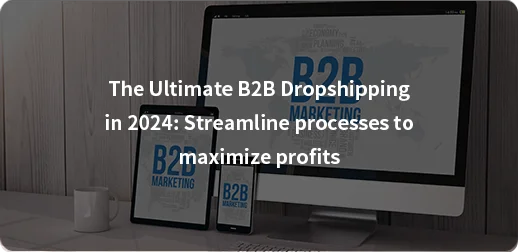Running out of stock is nothing less than a nightmare for any business or e-commerce seller. It can mean lost sales, frustrated customers, and even damaged reputation. However, if you think overstocking solves the issue, it’s just as bad. It ties up your cash, takes up valuable warehouse space, and can lead to products expiring or becoming damaged.
So, how do you find the perfect balance? That’s where stock control comes in. Stock control is the process of tracking your inventory levels and making sure you have the right amount of stock on hand to meet demand. It’s an essential part of any e-commerce business, but it can be tricky to get right.
In this blog post, we’ll walk you through the basics of stock control. We’ll explain what it is, why it’s important, and how to do it effectively. So whether you’re a seasoned pro or just starting out, read on for everything you need to know about stock control.
What is Stock Control?
In essence, stock control sounds like a pretty formal term, and it is! For now, let’s start by understanding it at grass root levels. Stock control is the process of striking a balance in terms of the inventory items you have stocked. In other words, you don’t want to go too high or too low, which can damage a business.
If you believe stock control only works for big shots in the market, that’s not true. Stock control has its plus points for every business type, from those like Apple to your local grocery store.
Stock control ensures that you’re making the best of your inventory storage. You want to always have items available for incoming orders. Alternatively, you don’t want to spend a major chunk of your capital on storing items that will only sit untouched for a long time.
You might have gotten the hint already – stock control heavily depends on forecast demands. What does that mean? Simply that you’re aware of customer demands. This includes know-how, such as which items are sold out quicker than others or which ones don’t need to be bought in bulk quantity.

Types of Stock Control Methods
Stock control methods are strategies each with differing practices, pros, and cons for businesses to balance out their inventory. Let’s get one thing straight – there’s no ‘one size fits all’ here. Where one method might work for a particular business, another might have to combine entirely different methods. Preferred stock control methods also depend on the types of goods the business or e-commerce store is selling. Moving on, some of the most common stock control methods include:
FIFO (First In, First Out)
The name should give it away: the FIFO method focuses on selling inventory that came in first. The oldest batch of inventory in the warehouse goes out before the second, third, or latest batch. This method decreases the risk of expired or damaged products, usually in long-term storage.
Most businesses selling perishable goods have a FIFO method set up. On the flip side, a primary disadvantage of this product is financial record discrepancies. This goes out specifically in cases where the price of goods suddenly spikes rather than gradually increasing. As a result, the profits calculated using the cost of goods sold (COGS) are lower than the actual profit because of the price hike in recent batches compared to previous ones.
Just-In-Time (JIT)
Initially a Japanese idea, the JIT method became a solid proposition once the Toyota Production System started using it in the 70s. This method refers to having an adequate amount of inventory to meet customer demand without overstocking.
The JIT method has numerous pros, including reduced inventory wastage and decreased storage costs. Receiving inventory from suppliers and shipping them out to customers within days means a massive reduction in any inventory becoming unsellable. Similarly, businesses usually have to pay per volume for inventory. Lesser inventory equals lesser storage costs! Even those with warehouses can optimize the extra space with the JIT method. However, the primary challenges of adopting JIT include higher stockout risks and the need to accurately forecast demand.
Economic Order Quantity (EOQ)
The EOQ method offers the best of all worlds for several business types. This method uses a mathematical formula to calculate the optimal order quantity. The formula uses three variables: holding cost, annual demand, and order cost. You can do the math yourself or utilize ERP software for automated calculation.
An EOQ method can help minimize the risk of stockouts and inventory costs. The order quantities calculated mean you won’t run out of inventory before the next batch, and you won’t be storing more than required. So, what’s the catch? Well, you’ll be buying according to predictable demand and in batches. Furthermore, this standard formula doesn’t account for changes in inventory costs and consumer demands.

Vendor-Managed Inventory (VMI)
The VMI method puts your inventory and storage processes quite literally in the hands of the vendor. Simply put, a third party manages your inventory, including ordering, monitoring, and restocking inventory.
You’re transferring the responsibility to another party, but there’s another added advantage. A VMI system significantly minimizes your inventory costs. Businesses utilizing VMI only have to pay the vendor as per the stocks sold, and the remaining inventory is returned. However, giving the powers of inventory control to a vendor is risky, especially considering allowing data access. If you can manage a way around that, your sales revenue can still suffer because of a lazy vendor causing frequent stockouts.
ABC Analysis
The ABC method divides a business’s entire inventory into three categories. First up, the A group constitutes the most important items. The usual criteria for this is items with the highest sales or value. Second is the B category, with important items but less significant than those in A. Lastly, the C category includes items that are least important for the business, those they can go without for some time.
The benefits of this system are a no-brainer. You’re categorizing the data set and keeping high-priority items under tight control. This means businesses can optimize time and labor by frequent cycle counting of high-priority items and occasionally for low-priority. But it’s not all rainbows and sunshine down this corridor, either. The ABC method overlooks GAAP, i.e., generating significant external reports for investors and creditors. Moreover, the method has an individual focus on products instead of a collective focus on the overall overhead costs.
Features of Stock Control Systems
At the cornerstone of it all, we have a stock control system that aligns everything from A to Z. Besides functioning per the stock control method chosen, a system can help automate numerous functions. Stock control systems can build from anything, from a basic Excel sheet to complex software. Of course, the latter is incomparable if your business can afford it. Here’s what a robust stock control system can do:
Real-Time Inventory Tracking
Till now, we’ve shed light on the importance of stock control, specifically the challenges of either extreme. An essential feature in advanced stock control systems nowadays is real-time inventory tracking. Stock control systems bridge the gap in inventory management by ensuring accurate inventory records 24/7.
By using this feature, business owners can keep an eye on inventory levels and the location of each product or batch. The benefits are obvious; you’ll know how much inventory you need and can store. Additionally, you’ll also be saving time by knowing where each and every product is stored in the warehouse.

Improved Forecast Demand
In a business, there’s a lot of guesswork. While you’d think forecast demand falls in the same domain, there are ways to get better insights. For starters, you need to consider the data analytics feature that stock control systems include. Real-time tracking can assist in manually analyzing data for forecast demand. However, most ERP software now comes with a separate data analytics tool that reduces your work.
Data analytics offers accurate and measurable insights into:
- Your existing inventory
- Predictions based on previous activity
- Estimated days till stockout
- Optimal stock levels
- Seasonal changes in customer demand
- Best-selling products
- Items not generating sales
Individually, these stats may not seem much. However, together, they can assist in identifying the forecast demand and consistently improving it with consistent data feeding. For businesses, this can mean staying on top of the game by knowing how to manage your inventory according to internal and external factors, including consumer demand.
Reduced Costs
Cost is everything in businesses. You want to break even within the first few years but then start making profits to stay afloat in the market. That said, inventory costs add massive amounts to a business’s investment capital. The cost of inventory storage, let alone the vendor’s invoices, can take a toll on any business’s expenditure.
Instead of scaling down your business operations, the trick is effectively managing wherever possible. And one of the areas that can significantly help cut down costs is inventory management. With balanced inventory levels, you’re neither losing customers due to stockout nor storing inventory that won’t sell and is eating away at your capital. In the long term, this also means increased profitability for businesses and e-commerce stores.
Effective Use of Resources
Many businesses make one fatal mistake: not automating routine processes. Consequently, this can lead to resources maxing out sooner than later. For small and medium-sized businesses, effective use of limited resources is even more critical. You don’t want to spend excess money on labor that spends most of its time tracking and managing inventory.
A stock control system automates several processes, including inventory management and data analytics. Where you would need dozens of employees for cycle counting and inventory locating, a single ERP software can handle that better. Plus, your employees can use their time better in other processes.

Tips to Improve Stock Control
Well-managed stock control is a clear competitive edge in today’s market. We’ve mentioned how a stock control system can do wonders for your business. Keeping that in mind, here are a few more tips to improve your business’s stock control:
Monitor Vendor Performance
If you haven’t heard the saying yet – vendors play a huge role in a business’s success, meaning they can make or break a deal. A vendor that knows how to run things will ensure your inventory gets delivered timely and isn’t short on the order requirements. One that doesn’t means risking a supply chain failure and losing customers.
Invest in Stock Control Technologies
Entrepreneurs are often on the search for the latest tech that can level up their business. If you’ve been underestimating the importance of stock control in improving your business’s efficiency, it’s time to take action. Stock control technologies are becoming more advanced with each passing day. Many softwares have already started automating inventory management procedures, meaning an effective use of resources. By putting your money in stock control, you’ll also benefit from forecast demand using data analytics. Both these factors combined can lead to unimaginable business growth over time.
Review Stock Control Procedures
As is common with all things in the business world, stock control needs to be reviewed from time to time. You may think you’ve set up the ultimate stock control system that doesn’t need to be revamped anytime soon. With the latest data entries, changes in demand patterns, advancements in tracking, adjustments in reordering schedules, etc., it’s important to review these procedures regularly. This way, besides an efficient stock control strategy, you’ll stay updated on the latest trends in this industry.

Final Verdict
Stock control is a complex but essential part of any e-commerce business. By following the tips in this blog post, you can set yourself up for success and avoid the pitfalls of poor stock control.
But remember, there’s no one-size-fits-all solution to stock control. So experiment, find what works for you, and don’t be afraid to ask for help if you need it. With a little effort, you can master stock control and take your e-commerce business to the next level.
Ready to boost your e-commerce hustle up a notch? We at Globallyfulfill provide multiple services any ecommerce company would need, from warehousing storage and quality inspection to packaging and shipping. Besides that, you can kick start things with the ERP software. With this powerful tool at your company’s backend, you can track inventory levels, forecast demand, and order the right amount of stock, amongst multiple other benefits. So, what are you waiting for?
















